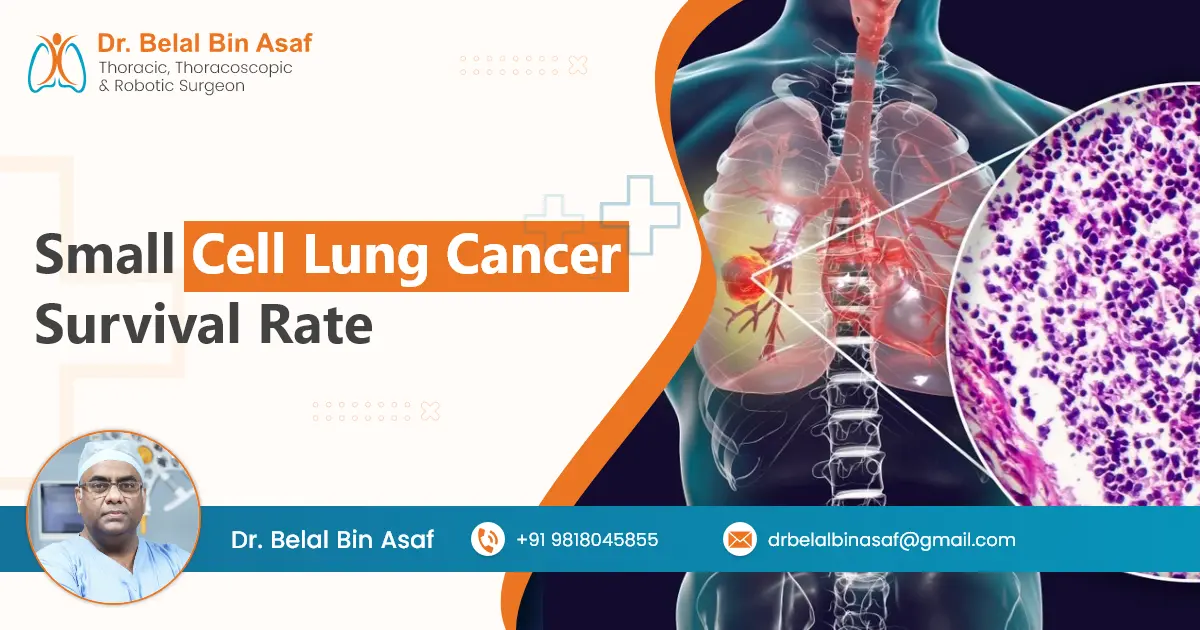Small cell lung cancer (SCLC) is one of the most aggressive forms of lung cancer with a high tendency to spread rapidly and a relatively poor response to long-term treatment. While it accounts for only 10 to 15 percent of all lung cancer cases it has a significantly lower survival rate than non-small cell lung cancer. The survival outcomes for SCLC remain dismal largely due to its aggressive nature and late-stage diagnosis in most patients. In this blog we’ll explore survival rates for SCLC in depth including how they vary by stage and what factors can influence outcomes.
Contents
- 1 What Is Small Cell Lung Cancer (SCLC)?
- 1.1 How Poor Is the Overall Survival Rate for SCLC?
- 1.2 What Is the Survival Rate for Limited-Stage SCLC?
- 1.3 What Is the Survival Rate for Extensive-Stage SCLC?
- 1.4 What Factors Affect the Survival of SCLC Patients?
- 1.5 What Are the Current Treatment Options for SCLC?
- 1.6 Why Is Early Detection So Important for SCLC?
- 1.7 Can Participation in Clinical Trials Improve Outcomes?
- 1.8 What Is the Future Outlook for SCLC Patients?
- 1.9 Conclusion
What Is Small Cell Lung Cancer (SCLC)?
Small cell lung cancer is a fast-growing cancer that typically begins in the breathing tubes (bronchi) in the center of the chest and spreads quickly to other parts of the body. It is strongly linked to cigarette smoking and is rarely seen in people who have never smoked. SCLC is divided into two main stages: limited-stage (LD-SCLC) and extensive-stage (ED-SCLC) based on how far the cancer has spread at the time of diagnosis.
How Poor Is the Overall Survival Rate for SCLC?
The overall survival rate for small cell lung cancer remains very low compared to many other types of cancer. Less than 7 percent of patients diagnosed with SCLC survive five years after diagnosis. This low survival rate is largely due to the fact that SCLC is usually diagnosed at a later stage when the disease has already spread making it harder to treat effectively. Most patients with SCLC experience a temporary response to treatment but relapse is common and typically rapid.
What Is the Survival Rate for Limited-Stage SCLC?
When SCLC is diagnosed at the limited stage meaning it is confined to one lung and possibly nearby lymph nodes it offers a slightly better prognosis. With aggressive treatment—usually a combination of chemotherapy and radiation therapy—the median survival ranges from 16 to 24 months. Around 14 percent of patients with limited-stage SCLC survive for five years or more after diagnosis. However even with the best current treatments recurrence rates remain high.













 +91-9818045855
+91-9818045855
